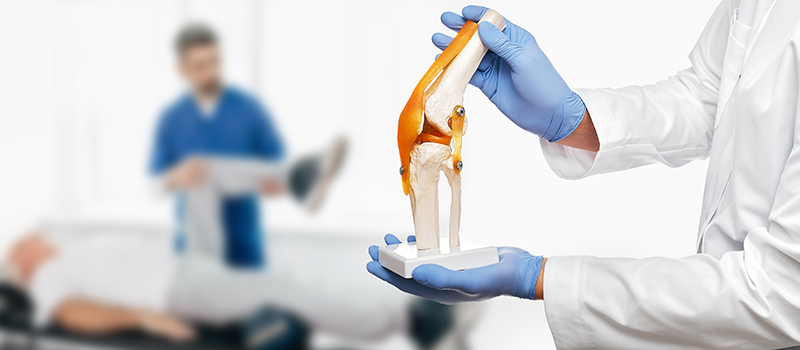Orthopaedics subject in MBBS deals with the study of the musculoskeletal system of the human body. The subject includes topics such as Fracture and Dislocation – General Principle and Management, Disease of Bones and Joints – Infections, Tumour of the Bones and Joints, Congenital disorder of the Bones and Joints, Disorder of the Growing Skeleton, Disorder of Muscle Tendons and Ligaments,Hand and the Foot, Spine, Vertebral Column and Spinal Cord, Metabolic Diseases of the Bones, and Nerves and Nerve Injuries.
Subject Weightage of Orthopaedics in Competitive Entrance Exams
According to the new MBBS academic pattern, the Orthopaedics specialty is combined in the General Surgery subject along with Anaesthesiology, ENT, Ophthalmology, Physical Medicine and Rehabilitation, and Radiodiagnosis.
In NEET-PG,the weightage of the surgery subject is around 45 questions from which the average number of questions to be asked from Orthopaedics is around 5-8 questions.
In INI-CET, a total of around 30 questions are asked from the General Surgery section. Out of the total number of questions, the orthopaedics subject holds a weightage of about 5-7 questions.
Important Topics of Orthopaedics
Here’s a list of high-yielding topics for Orthopaedics for NEET-PG, INI-CET, and MBBS Prof exams.
- Management of Traumatic Paraplegia
- Osteomyelitis and Bone tumors
- Pott’s Spine
- B. Knee and Hip
- Diagnosis of Benign tumor
- Management of Malignant Tumors
- Bone Cyst
- Cruciate Ligaments and Meniscal Injuries
- Congenital Dislocation of Hip Joint
- Compartment Syndrome
- Crush Injury
- Fat Embolism
- Myositis Ossification
- Shoulder and Elbow Dislocation
- Fractures: Clavicle, Humerus, Lateral condyle Humerus, Supracondylar Humerus, Colles
- Carpo Metacarpal Injuries
- Fractures: Hip Femur Shaft, Patella, Tibia and Calcaneum, Scaphoid, Jefferson’s, Hangman’s
- Investigation forStress Fracture
- Radiological Features
- Cervical Spine Injuries
- Hip and Knee Dislocations
- Ankle Sprain
- Polio
- Amputation
- Salter and Haris, Rang Classification
- Disc Prolapsed
- DupuytrensContracture
- Rickets and Osteomalacia
- Paget’s Disease
- Osteoporosis
- Hyperparathyroidism
- Osteoarthritis
- Ankylosing spondylitis
- Gout
- Erb’s Palsy
- Ulnar, Median and Radial Nerve Injury
- CDH
- Slipped Capital Femoral Epiphysis
- Osteoclastoma
- Osteopontin
- Osteocalcin
- Carpel Tunnel Syndrome
- Genu Varum
- DDH
- Knuckle Bender Splint
- Fibrous Dysplasia
- Volkmann’s Ischemia
- Sudeck’s Osteodystrophy
- Management of Open Fractures
- Treatment of Congenital Dislocation of Hip Joint
- Clinical Features in 6 months Old Paraplegia
- Compartment Syndrome and its Presentation, Diagnosis, &Treatment
- Structure of Bone with Diagram
- Clinical Features, Pathological Anatomy, and Treatment of Recurrent Dislocation of Shoulder
- Ewing’s Sarcoma
- Myositis Ossificans
- Etiopathogenesis of Necrotizing Fasciitis.
- Management of Case of Necrotizing Fasciitis of Lower Limb
- Classification of Epiphyseal Injuries and Complications
- Classify Nerve Injuries and Treatment
- Management of CTEV- Congenital Talipes Equinovarus aka Club Foot
- Management of GCT- Giant Cell Tumor of Bone
- Structure of Growth Plate with diagram. How does it help in endochondral ossification?
- Clinical Features, Etiology, Pathology, and Management of Rheumatoid Arthritis
- Thomas Splint
- Intracapsular Fracture of Neck of Femur. Anatomical Classification of Fracture Neck Femur
- Etiopathogenesis, C/F, and Management of Pyogenic Osteomyelitis of Distal end of Femur
- Mechanism of Injury, C/F, and Management of Supracondylar Fracture of Humerus and Complication
- Frozen Shoulder
- Causes of Low Lack Pain
- Enumerate Complications of Fracture
- Tuberculosis Knee Joint
- Volkmann Ischemic Contracture
- Principle in Management of Extremity Fracture
- Open Fracture and Complications
- Guillotine Amputation
- Bone Biopsy
- Rickets Orthopaedics Manifestations
- Cubitus Deformity
- Post-hip Dislocation
- Acute Hematogenous Osteomyelitis of proximal end of tibia in 5 years old
- Wrist Drop
- B Splint
- ABC in Polytrauma
- Sodeck’sOsteodystrophy
- Pott’s Paraplegia
- Painful Heel
- GenuValgum
- Classify Bone Tumors. Clinical Features, Management of Ewing Sarcoma
- Mandible Fracture – First Aid Management
- Dietary Rickets
- Fractured Pelvis – Mechanism, Diagnosis &Treatment
Click here to get conceptual clarity on the Orthopaedics topics in detail.
Skills Required to Excel in Orthopaedics in MBBS
To excel in Orthopaedics, aspiring ophthalmologists must be skilled in the following:
- Diagnose sprains and strains, as well as other soft tissue ailments.
- Look for common fractures in the limbs.
- Apply first aid for common sprains and fractures.
- Give patients with polytrauma immediate care.
- Handle simple fractures of the forearm, clavicle, phalanges, etc.
- Apply splinting procedures, such as the thomas splint, slabs of plaster and castings, paralysis due to skin tractions, etc.
- Learn indications for fracture internal and external fixations, as well as closed and open reductions.
- Handle frequent bone infections; get knowledgeable about sequestration, amputation, and bone deformity correction protocols.
- Advice and counsel patients undergoing post-traumatic stress disorder, poliomyelitis, cerebral palsy, or amputation recovery.
- Possess a precise set of orthopaedic abilities and give wise counsel on skeletal and associated problems at the primary or secondary level of healthcare.
Must Read: Important Topics of Surgery in MBBS

